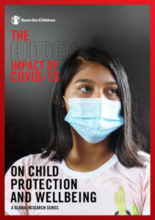About the study
COVID-19 has spread rapidly within and between countries across the globe. Governments worldwide have implemented measures to contain the spread of COVID-19 including school closures, home isolation/quarantine and community lockdown, all of which have secondary impacts on children and their households. Save the Children launched a global research study to generate rigorous evidence on how the COVID-19 pandemic and measures implemented to mitigate it are impacting children’s health, nutrition, learning, well-being, protection, family finances and poverty, and identify children’s and their family needs during these times. The research also captures children’s views and messages for leaders and other children.
The research was implemented in 46 countries and results in the largest and most comprehensive survey of children and families during the COVID-19 crisis to date, with 31,683 parents and caregivers and 13,477 children aged between 11-17 years old participating in the research. The research sampled three distinct population groups:
1. Save the Children programme participants;
2. Specific population groups of interest to Save the Children;
3. The general public.
A representative sample of Save the Children programme participants with telephone numbers or email addresses was obtained in 37 countries.
This report is one in a series presenting findings from the Global COVID-19 Research Study. The results presented here focus on the implications for Child Protection issues, drawing on data from our representative sample of 17,565 parents/caregivers and 8,069 children in our programme participants group. Comparisons with our general public sample have been made in some places.
Topics investigated include violence occurring in the home, the separation of children from their caregivers, mental health and psycho-social well-being of caregivers and children, child labour, online safety and child protection support and services. Available data was analysed and presented considering the socioecological model in order to highlight the interconnectedness of the broader socio-ecological environment which places children within their households and communities. This enabled the detailing of the range of associated risks and protective factors in relation to these child protection issues as well as drawing attention to the complexity of their interrelationship. Differences in impact and the needs of children by region, age, gender, disability, minority group, indicators of poverty, and more, were explored.

